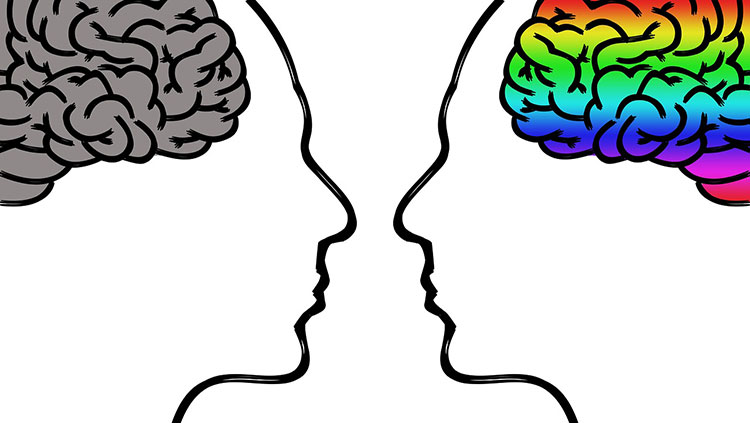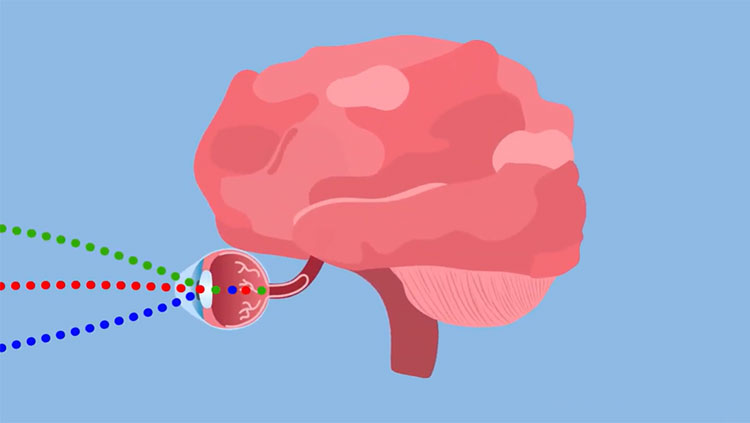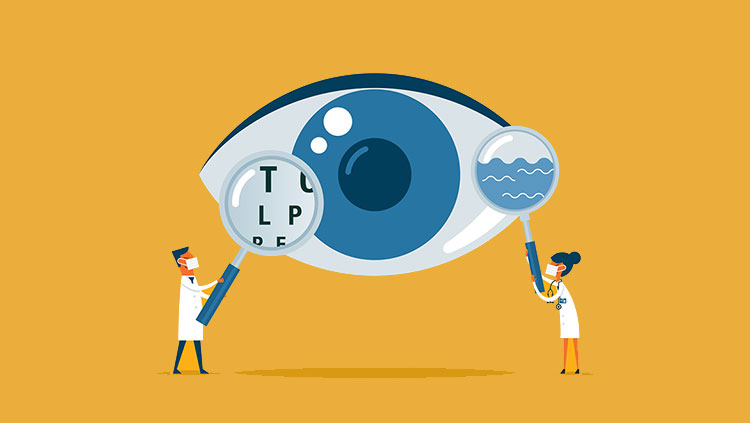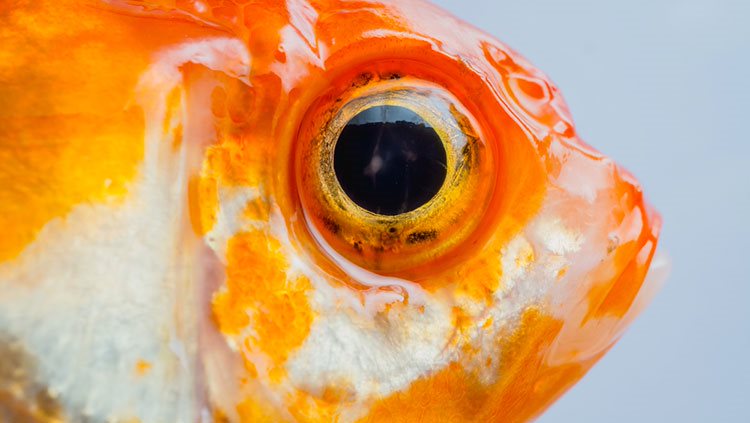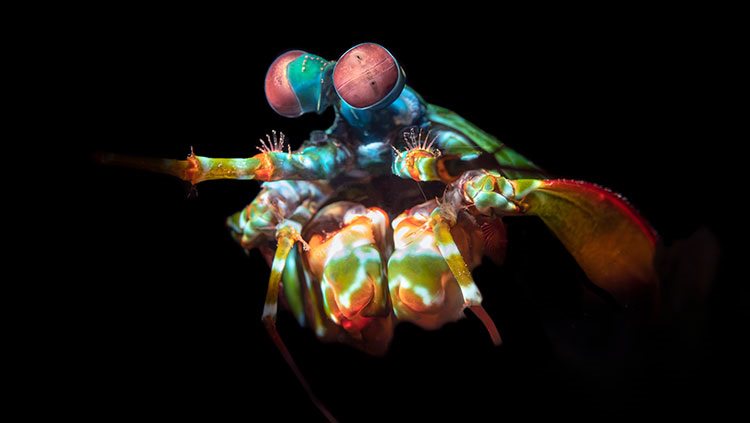A Chocolate Heist: Neuroscience of Dark Adaptation
- Published23 Sep 2024
- Source BrainFacts/SfN
When you step from a lit room into a dark one — perhaps to nab some nighttime chocolate — you might struggle to spot the light switch. But if you pause for a few minutes, you’ll notice your vision slowly begin to improve. This phenomenon relies on two nerve cells in our retinas: cones and rods. Cones help us see colors clearly in well-lit environments, while rods are optimized for seeing black and white in low-lit ones.
Rods produce a protein called rhodopsin, which depletes in settings with a lot of light to prevent your eyes from becoming overstimulated. In the dark, however, rhodopsin production rachets up over time. This process sharpens your low-light vision — but it can’t offer the same level of detail cones do in bright light. The brain also helps adjust the sensitivity of our vision in a process called contrast gain control, fine-tuning our sight to better spot the chocolate in the dark.
This is a video from the 2024 Brain Awareness Video Contest.
Created by Christoph Koenig.
CONTENT PROVIDED BY
BrainFacts/SfN
Transcript
On a quiet Christmas night, a young boy was on a mission: stealing chocolate.
Unfortunately, he didn't consider the effect of going from his bright room into the dark hallway, and he fell.
Luckily, he has a clever dog to explain the cognitive neuroscience of dark adaptation.
Light focused by your lens strikes the retina at the eye's back, where it meets two types of light-sensitive nerve cells: rods and cones. Cones are like the HDTV of your visual system, offering precision and color sensitivity, though they're less light-sensitive. They excel in daylight, supporting activities that require fine detail, such as reading.
Then there are rod cells, which are like your '90s black-and-white TV, specialized for low light but don't capture fine detail. Why those, you may rightly ask? Night vision is the answer.
The sensitivity of cones and rods to specific light types stems from a chemical within each cell. Rods, highly sensitive to light, contain rhodopsin. In daylight, rhodopsin breaks down faster than it can replenish, reducing sensitivity to prevent overstimulation.
However, in darker conditions, rhodopsin regenerates, boosting rod activity, making them ideal for detecting general shapes without needing color or precision. Perfect for a stealthy chocolate heist in the dark.
Cones and rods are distributed strategically across your eye. Cones are concentrated in the center for high-definition focus, while rods populate the periphery, enhancing situational awareness in the dark.
After cones and rods detect light, additional nerve cells in the retina pool and process it. This light information then journeys to the thalamus, a major sensory intersection where hearing, touch, and sight converge and integrate before being relayed onward.
Finally, it reaches the visual cortex at the brain's back, where complex aspects of vision, including recognition and interpretation, take place.
So, let's rewind. What happened?
In your bright room, active cones dominate over bleached rods. Stepping into the dark, you struggle to see as cones aren't effective in low light, and rods begin to adjust. Rhodopsin slowly regenerates. Within about 10 minutes, rods surpass cones in sensitivity, reaching their peak in roughly 25 minutes.
Yet there's more to your night vision than just eye adjustments. Picture your visual system as a sound engineer in a dimly lit studio. Your eyes act like microphones, picking up the faintest light. Next, your brain steps in as the expert at the soundboard.
Through a process called contrast gain control, it's as if your brain is sliding up the controls, fine-tuning the dark and light in your visual world. This adjustment helps turn indistinct edges and shadows into recognizable objects, such as the tree and chocolate.
With your eyes and brain working in concert, you move through the darkness smoothly, ready for your chocolate heist.
Let's hear more on this from our expert, Dr. Freya Lygo-Frett.
We can then change and still see and recognize the same things in our environment wherever we go. This is something that we call contrast gain control.
This gain control feature of being able to adjust our sensitivity to different environments is something that we do not only in vision but across all our other senses and even up to some higher-level cognitive processes.
So, it's not only a feature of vision, it's a feature of the whole brain itself.
Thank you, Dr. Lygo-Frett.
So, there you go. From eye to brain, you're now equipped with the cognitive neuroscience knowledge for a triumphant chocolate heist.
Merry Christmas and bon appétit!
Also In Vision
Trending
Popular articles on BrainFacts.org


